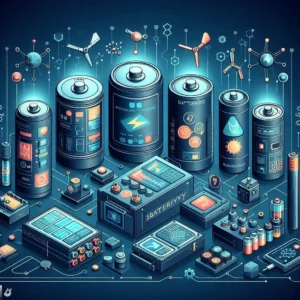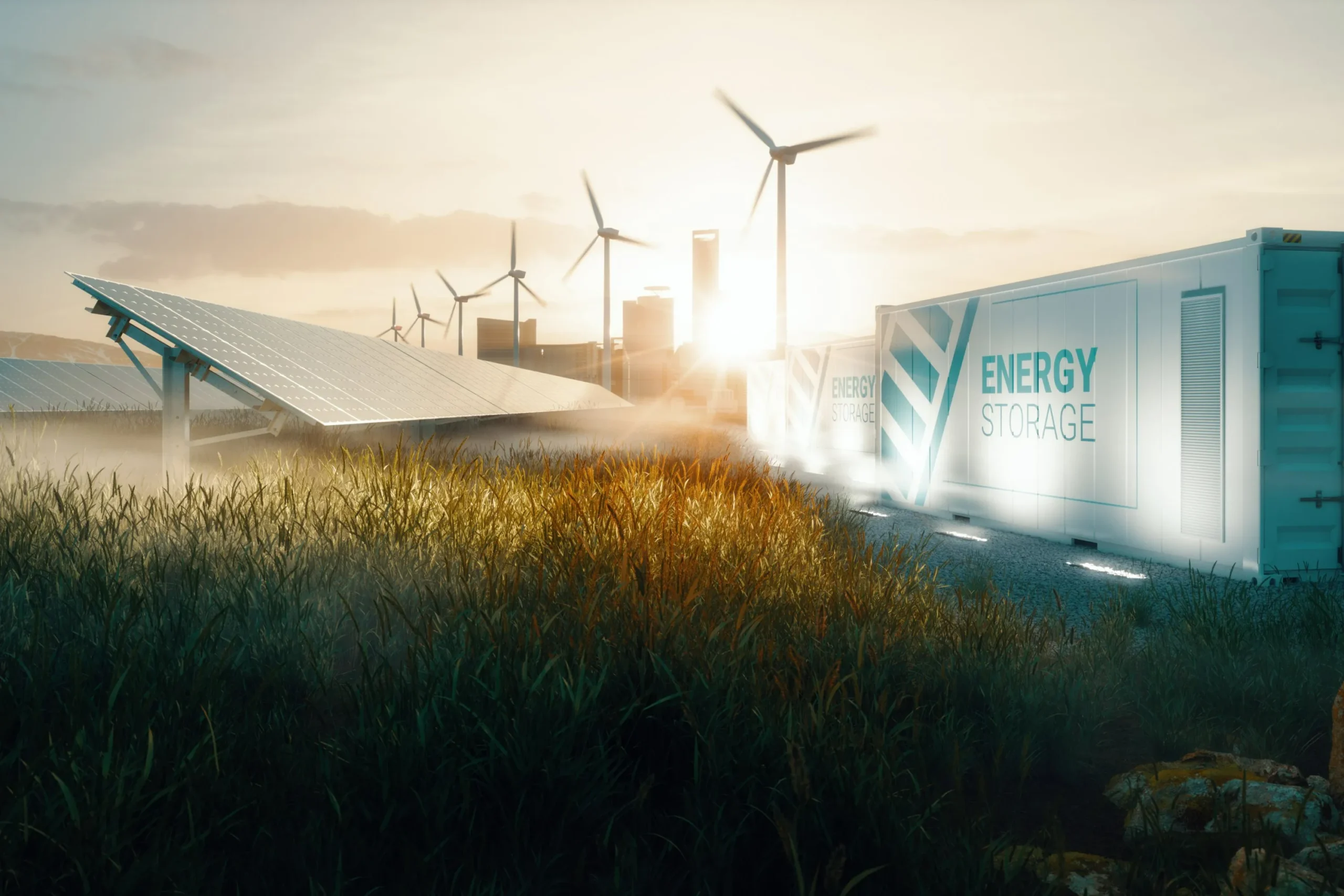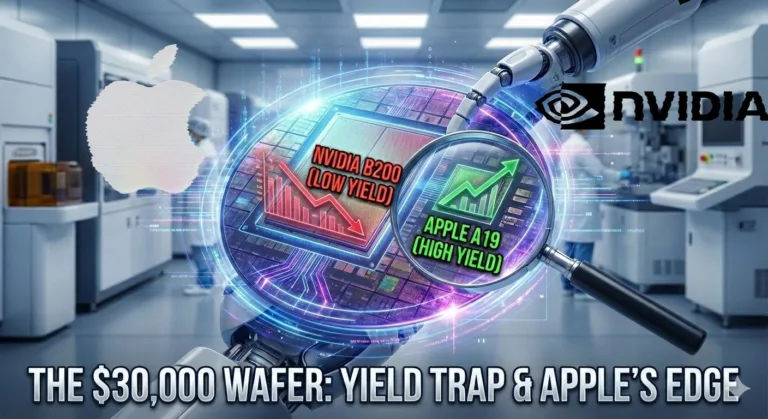The world is at a crossroads in its journey towards a sustainable future. As we move away from fossil fuels, renewable energy sources like solar and wind are taking center stage. However, their inherent variability presents a challenge: how do we store their excess energy for times when the sun isn’t shining or the wind isn’t blowing? This is where Battery Energy Storage Systems (BESS) step in, revolutionizing the way we generate, store, and use electricity.

BESS: The Guardian of Renewable Energy


Grid Stability and Reliability:
- Frequency Regulation: BESS can provide rapid response to fluctuations in electricity demand, helping to stabilize the grid by maintaining a consistent frequency.
- Voltage Support: BESS can help regulate voltage levels, ensuring a steady and reliable power supply.
Renewable Energy Integration:
- Intermittency Smoothing: BESS mitigates the variable nature of renewable energy sources like solar and wind by storing excess energy during peak production and releasing it during periods of low production.
- Grid Balancing: BESS helps match supply with demand, reducing the need for conventional power plants to compensate for fluctuations in renewable generation.
Microgrid Support:
- Islanding Capabilities: BESS enables microgrids to operate independently in case of a grid outage, providing uninterrupted power supply to critical facilities.
- Load Shifting: BESS allows for strategic energy use, shifting loads during periods of low demand and storing excess energy for peak demand periods.
Peak Shaving and Demand Response:
o Cost Savings: BESS helps reduce electricity costs by storing energy during off-peak hours when electricity rates are lower and releasing it during peak demand times.
o Load Management: BESS enables businesses to optimize their energy consumption patterns, reducing the overall demand on the grid.Fast Response Time:
o Quick Ramp-Up: BESS provides rapid response times compared to traditional power plants, making it valuable for addressing sudden changes in demand or supply.
Environmental Benefits:
o Emission Reduction: By enabling the integration of renewable energy and improving grid efficiency, BESS contributes to a reduction in greenhouse gas emissions and air pollutants.
o Green Energy Storage: Advancements in battery technology, such as recyclability and the use of sustainable materials, contribute to environmentally friendly energy storage solutions.Enhanced Grid Resilience:
- Backup Power: BESS serves as an effective backup power source during grid outages, ensuring continuity for critical infrastructure, businesses, and residential areas.
Distributed Energy Resources (DERs) Integration:
- Optimized Energy Management: BESS can integrate with various DERs, such as solar panels and wind turbines, to optimize energy production and consumption.
Technological Advancements:
- Innovation Opportunities: BESS encourages research and development in battery technology, fostering innovations like higher energy density, longer cycle life, and improved safety.
Regulatory and Policy Support:
- Incentives and Regulations: Governments and regulatory bodies often provide incentives for BESS deployment, fostering the growth of this technology.
Battery Energy Storage Systems (BESS) employ various battery technologies:

Lithium-Ion Batteries:
- Application: Widely used in consumer electronics, electric vehicles, and stationary energy storage.
- Advantages: High energy density, long cycle life, lightweight, and relatively low self-discharge.
- Variants: Various types, including lithium cobalt oxide (LiCoO2), lithium manganese oxide (LiMn2O4), lithium iron phosphate (LiFePO4), and others.
Lead-Acid Batteries:
- Application: Commonly used in uninterruptible power supply (UPS) systems, backup power applications, and renewable energy storage.
- Advantages: Low cost, mature technology, and suitable for short-duration energy storage.
- Limitations: Heavy, lower energy density, and shorter cycle life compared to some newer technologies.
Sodium-Ion Batteries:
- Application: Emerging technology with potential applications in stationary energy storage.
- Advantages: Sodium is more abundant and less expensive than lithium, and sodium-ion batteries may offer similar performance characteristics.
- Current Status: Research and development are ongoing to improve performance and reduce costs.
Flow Batteries:
- Application: Suitable for large-scale energy storage applications and grid-level storage.
- Advantages: Scalable, long cycle life, and the ability to decouple power and energy capacity.
- Variants: Redox flow batteries, including vanadium redox flow batteries (VRFB), zinc-bromine flow batteries, and others.
Nickel-Based Batteries:
- Application: Used in various applications, including consumer electronics, medical devices, and renewable energy storage.
- Variants: Nickel-metal hydride (NiMH) and nickel-cadmium (NiCd) batteries.
- Advantages: NiMH offers higher energy density compared to NiCd, and both are known for reliability.
Solid-State Batteries:
- Application: Considered the next-generation technology, with potential applications in electric vehicles and stationary energy storage.
- Advantages: Higher energy density, improved safety, and longer cycle life compared to traditional lithium-ion batteries.
- Current Status: Still in the research and development phase, with ongoing efforts to commercialize solid-state battery technology.
Lithium-Sulfur Batteries:
- Application: Research is ongoing for applications in electric vehicles and stationary energy storage.
- Advantages: High theoretical energy density and potential for lower costs.
- Challenges: Currently faces challenges related to cycle life and performance at scale.
Advanced Lead-Acid Batteries:
- Application: Evolving lead-acid technologies, such as absorbent glass mat (AGM) and gel batteries, are used in renewable energy and backup power systems.
- Advantages: Improved performance characteristics compared to traditional flooded lead-acid batteries.
Green Energy Storage: Advancements in battery technology, such as recyclability and the use of sustainable materials, contribute to environmentally friendly energy storage solutions.
The choice of battery technology depends on specific use cases, project requirements, and considerations such as cost, energy density, cycle life, and safety. Ongoing research and development continue to bring about advancements and innovations in battery technology for energy storage applications.
To know how battery energy storage system works Click Here.
Conclusion:
As we stand on the cusp of the BESS revolution, its transformative power extends beyond energy—a force shaping a cleaner, resilient, and equitable world. From stabilizing grids to empowering communities, BESS success stories are just the beginning. Ongoing technological advancements, policy support, and global collaboration herald a future where BESS is central to a sustainable energy landscape. Beyond mere innovation, our collective commitment to informed advocacy is crucial. By embracing the potential of BESS, we contribute to a world powered by clean energy and human ingenuity. Let’s unite for a future where BESS leads the way to sustainability and equality.
Discover more from WireUnwired Research
Subscribe to get the latest posts sent to your email.



